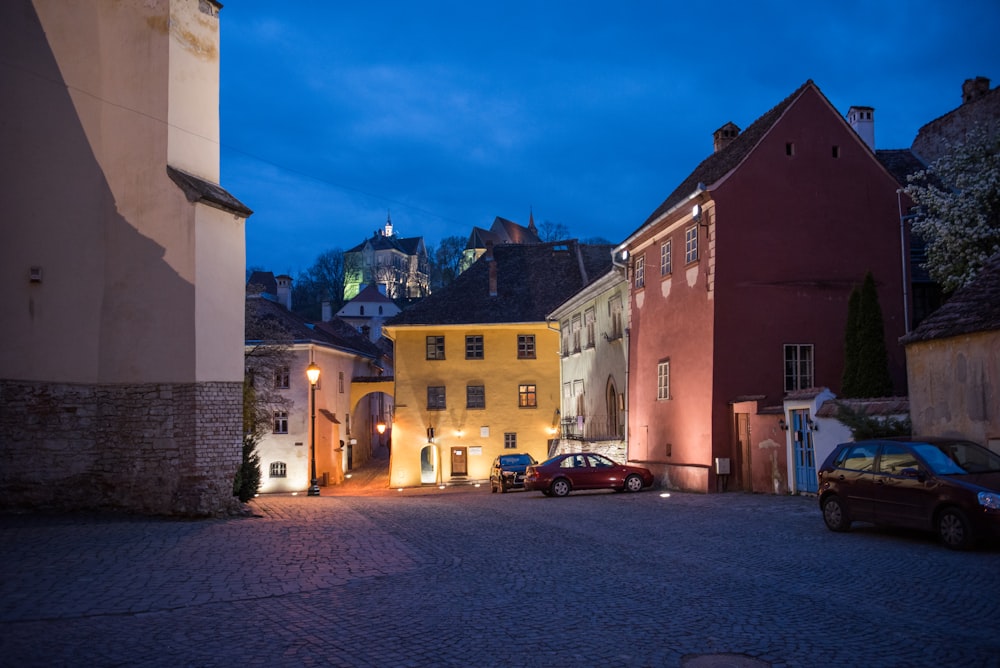Photo Lipscani Street, Bucharest
Ron Bernthal
Many Romanian cities have started to benefit from urban revitalization projects, a trend that involves investments in former industrial areas of cities are either former industrial sites, or have been underutilized for many years.
This is backed by demand from urban residents who prefer to give up living in unsafe apartment blocks in city centers with facilities that are obsolete, and not modernized, in favor of new housing and mixed-use structures located outside large cities, where access to employment, nature and new recreational facilities are readily available.
Such urban areas in Romania that have been given a new life are the North–West -and the North–East districts of of Bucharest. In the North-East section, in the Pipera area, a former industrial location in the city, new residential and modern office parks now mixed together following massive private investments that have taken place in the past two decades.
The Chitila area, in North–West Bucharest, is also a former industrial part of the city, known decades ago for its factories and the gritty railway station in the area. Both of these areas are now revitalized, with plenty of amenities, including re-developed green spaces.
Photo – Colosseum Mall in Chitila, Bucharest
Prime Kapital Development is building residential projects in both of these Bucharest districts, contributing to their regeneration. Buyers have already moved to both compounds. Avalon Estate in the Pipera area has welcomed its first dwellers, and its central park is now completed. Marmura Residences in Bucureștii Noi is already brimming with life, and only a few apartments are still available.

Photo : Avalon Estate, constructed by Prime Kapital Development
The developer is contributing to the regeneration of other cities as well, such as Ploiești, a 1-hour drive from capital Bucharest, and Iași in Northern Romania. The developer’s site works on Pleiades Residence in Southern Ploiești is progressing and the first phase of the compound is due to be ready this year.
Meanwhile, the Silk District mixed-use neighborhood in Iași, a large project developed on 108,000 square-feet situated on Calea Chisinaului, has already sold over 500 apartments. This region of the city was known in the 1960s for its textile factory, and it is now re-developed as a mix of offices, retail and residential.

Photo: The Silk District, Yashi Romania
Mixed-use projects have become an increasingly common solution in the context of expanding the concept of “15 minutes neighborhood” – an urban planning approach that promotes the idea that most of the daily needs of residents should be able to be satisfied in a time of about 15 minutes’ walk or with bicycle from home. This concept involves the creation of an urban environment that provides easy access to housing, jobs, services, recreation, thus reducing dependence on automobiles and promoting sustainability.
Photo of Sibiu Romania (photo by Suzanne Rushton on Unsplash)
Hamilton Central Europe, a member of the Hamilton group, opened a new global software development hub in Timișoara, western Romania. Specializing in the development of automated liquid handling platforms, the new center will contribute to the Hamilton Robotics division’s software solutions.

Photo: The Hamilton group in the Iulius Town business center
The hub is located in the Iulius Town business center and has an office space and a Hamilton Venus software testing laboratory, which the Romanian specialists are developing together with the teams in Reno (Nevada, USA) and Bonaduz (Graubünden, Switzerland).

Photo: New residential housing projects are expanding in former industrial areas outside of Romanian cities.
At the moment, the construction is ongoing for two residential phases comprising 661 apartments and an office phase of over 20,000 sqm, to which are added spaces dedicated to convenience stores that will offer a wide range of essential products and services, just a few steps away.
“Our efforts into re-developing parts of cities that have been decaying shows our commitment to urban regeneration. We believe in ecological neighbourhoods, with sustainable housing, with plenty of green areas and good infrastructure, well connected to the city’s public transport. And this is what people want from the places they live and work in. That’s why we see so much success with our projects”, said Prime Kapital’s representatives.
A good illustration of the developer’s attention to green spaces and pedestrian areas is the development of Avalon Estate. The project is built around a large private park and has lots of car-free areas. The project has exclusive common areas for residents, such as the Gatehouse, a perfect place for private events, the Clubhouse, the plant-filtered pool and the park that includes areas to fulfil the specific needs of different types of residents.
 P
P
Philip Morris factory in Otopeni Romania Source: PMI
There are three types of urban regeneration. Economic regeneration supports business growth in a community. By improving the economic climate in an underprivileged part of a city, economic regeneration helps attract private investment, encourage business relocation and residential development. Social and cultural regeneration focuses on arts and culture, on health and wellbeing, education, skills, and families. The aim is to help create and support communities.
Finally, environmental regeneration puts the focus on land renewal by recovering derelict land. This includes the creation of green areas, brownfield investments, and environmentally – focused projects that promote healthy behaviors like walking, bike riding, recycling, using the public transport.
“We’re happy to be contributing to all of these with our projects across Romania. Urban regeneration helps preventing cities from deteriorating, it enhances access to public transport, generates jobs, increases the value of properties, generates energy savings and offers a nicer environment to everyone”, added Prime Kapital representatives.


